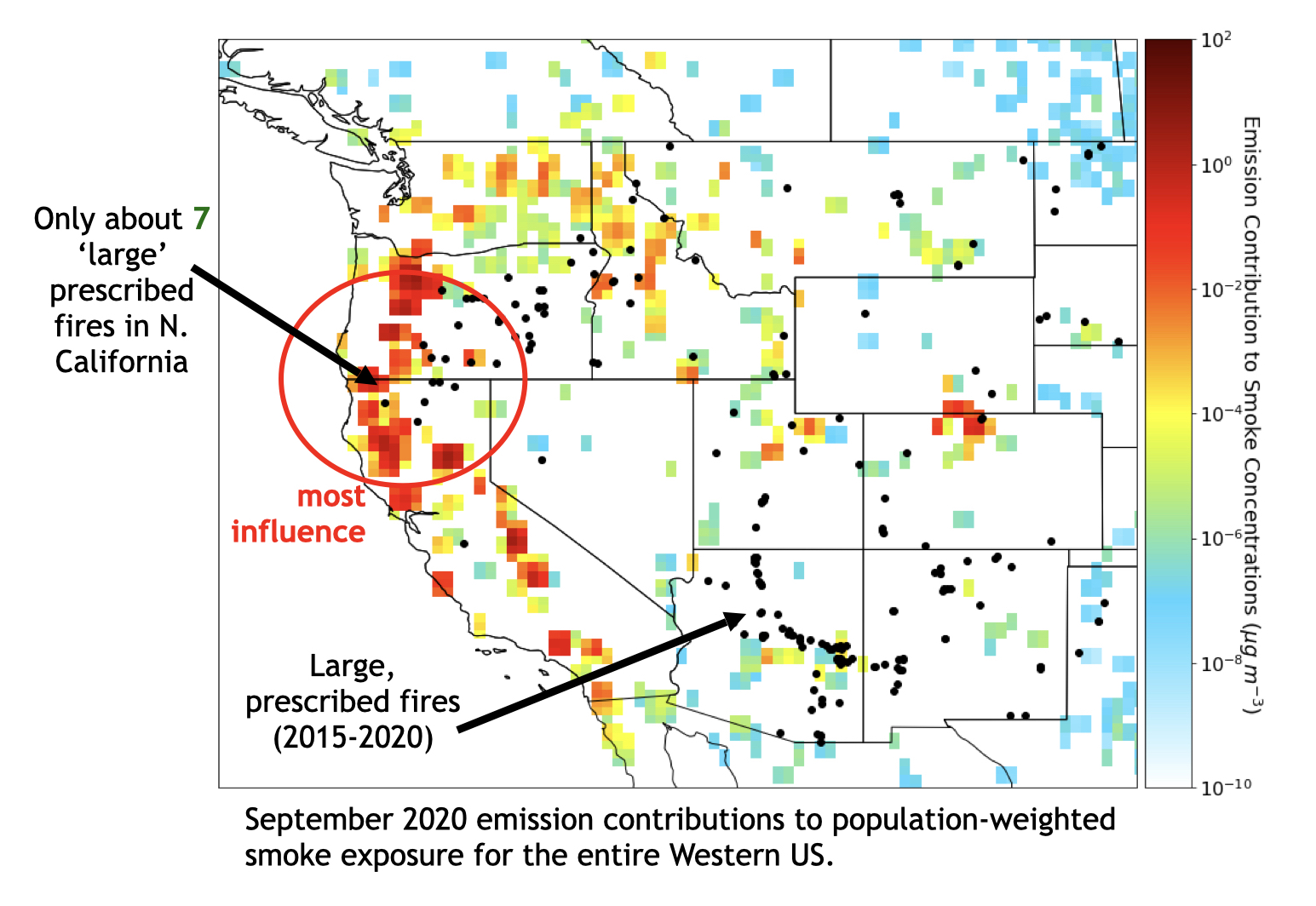Can prescribed fire reduce future smoke impacts? Research on how targeted prescribed burn treatments in heavily forested Western states may have an outsized impact on improving air quality for the entire western U.S. by reducing the likelihood of future wildfire smoke.
Catastrophic wildfires in the western United States pose significant risks to public health, infrastructure, and ecosystems. As these wildfires become more frequent, there is a growing need for a common methodology to identify suitable locations for prescribed burning aimed at mitigating future wildfire impacts to affected populations and ecosystems. This presentation explores the use of atmospheric chemistry transport modeling, satellite observations, and data from land managers to assess the effectiveness of prescribed burning interventions in reducing potential future wildfire smoke exposure. The presenter will offer lessons for states and rural environmental justice communities through a discussion on how implementing preventative prescribed burns in heavily forested areas such as Northern California and the Pacific Northwest may yield substantial net benefits for air quality across the entire western US, while similar interventions in other states would result in comparatively smaller impacts. This presentation is based on a recent publication of the same name: https://doi.org/10.1029/2022EF003468
Presenter: Dr. Makoto Kelp,NOAA Climate and Global Change Postdoctoral Fellow, Stanford University Dept. of Earth System Science
Recording(s)
Event Details
Oct 11 2023, 12 - 1pm
